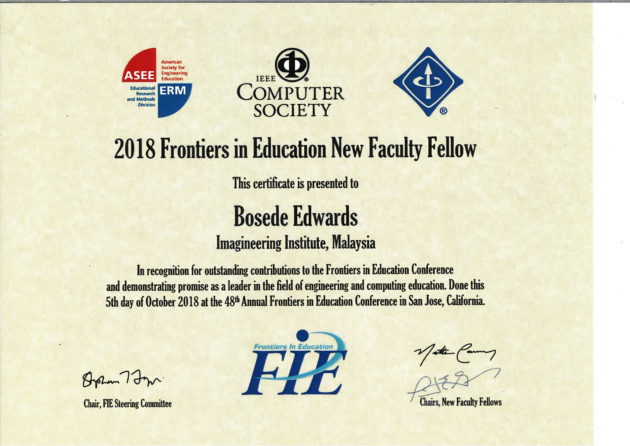

Month: October 2018
Does the Internet smell?

/ OCTOBER 26, 2018
http://www.govtech.com/question-of-the-day/Question-of-the-Day-for-10262018.html

You can’t smell the food in that review you’re reading on Yelp, but one day you might be able to.
Researchers at the Imagineering Institute in Malaysia are working on creating “digital smell.” One day they want users to be able to smell what they’re seeing when they use their digital devices. Right now, though, the process involves putting a cable up the user’s nose in order to stimulate certain neurons in the nasal passage.
In order to get people to think they were smelling something, the research team needed to deliver electric currents to the olfactory epithelium cells about 7 centimeters above and behind the nostrils. Most of the volunteers reported fragrant or chemical smells, although some also reported fruity, sweet, toasted minty, and woody odors.
The next step is to find a less invasive way to administer the electricity, such as a much smaller cable or by skipping the nose entirely and stimulating the brain instead.
CONGRATULATIONS to Imagineering Institute Research Fellow Dr. Bosede Edwards for being awarded the prestigious IEEE 2018 Frontiers in Education Faculty Fellow!

Interesting Engineering: This New Invention Lets You Smell Things Through Electricity Perfecting this idea would enable users to send smells over the internet.
This New Invention Lets You Smell Things Through Electricity
Perfecting this idea would enable users to send smells over the internet.

The idea of having a real-time change in smell during immersive experiences watching movies isn’t new. We can trace such an attempt into 1959 where a technology called AromaRama was used to send across smells across to the audience.
The benefit is greater engagement, as people would pick up on the smell of flowers when a scene revolves around a garden, as there is no better way to set the mood for the fantastic mood
The age where we can induce smell electrically!
In 2018, we are capable of a much efficient method that could get us the same results. The researchers at the Imagineering Institute in Malaysia have found a new method that could help a person smell an occasion, and they plan to use it in AR and VR based applications.
Imagine where you could get a sense of smell through mixed reality experiences. The researchers are calling this Digital Smell. Currently, the researchers have managed to do this by bringing in thin electrodes in contact with the inner lining of the human nose.
Yes, the current version requires two wires to be inserted into your nostrils.
That said the researchers are working on creating a smaller form factor of this technology so that it can be easily carried and used. The idea for such an invention comes from Kasun Karunanayaka, who went on with this innovation as a project to acquiring his Ph.D. with Adrian Cheok, who is now serving as the director of the institute.
He is also gunning for similar innovation, as his dream is to create a multisensory internet.
Much tinkering is needed to create a near perfect form factor
The first version of the project involved chemical cartridges that mix and release chemicals to produce odors. But this was not what the team wanted moving forwards. They wanted to create a system that can produce scent through electricity alone.
The team also collaborates with a Japanese startup called Scentee to develop a smartphone gadget that can produce smells based on user inputs.
To create an all-electric system, the team experimented with exciting the human neurons. The test requires a wire to be inserted into their nose. When the exposed silver tip touches the olfactory epithelium, which is located approximately 3 inches into the nasal cavity, the researchers will send an electric charge into them.
“We’ll see which areas in the brain are activated in each condition, and then compare the two patterns of activity,” Karunanayaka said. “Are they activating the same areas of the brain?” If so, that brain region could become the target for future research.”
The researchers varied both amperage and frequency of the current to see the smell sensations that they would create. For certain electric combinations, the perceived smells were off fruity or chemical in nature.
Motherboard: These Researchers Want to Send Smells Over the Internet
These Researchers Want to Send Smells Over the Internet
With electrodes up the nose, they made people smell things that weren’t there.

In the future, we could huff food blogs and snort stinky Twitter feeds straight into our sinuses.
Okay, I’ll admit that’s a highly exaggerated interpretation of new research by Kasun Karunanayaka, a senior research fellow at the Imagineering Institute in Malaysia, and his team. They’ve designed a concept for smelling digital content—like restaurant menu items or a florist’s rose bouquet—using electrical stimulation directly up your nostrils.
We’ve seen high-tech prototypes in the world of multisensory technology before: From molecule mixes that evoke the smell of New York in virtual reality, to “programmable” scent cartridges released during a movie, to gas masks for smelling sex while watching porn in VR. But most of these involve a chemical mix to make the scent. Instead of physical scent-mixing, Karunanayaka’s smellable internet involves sticking electrodes up your nose, to touch and stimulate neurons deep inside your nasal passages.
By varying the amount and frequency of the electrical currents, the researchers were able to evoke smells that weren’t there—but what test subjects actually perceived varied quite a bit, from person to person. Some described the smells as fruity, sweet, toasted minty, or woody, Karunanayaka told IEEE Spectrum. Others found the experiment so uncomfortable that they quit the trial after one session.
Shoving electrodes deep into nasal passages is obviously not the most user-friendly way to transmit digital smells, but the research team hopes to make the electrodes smaller and more flexible, or stimulate the brain directly, no invasive nose-cords required.
